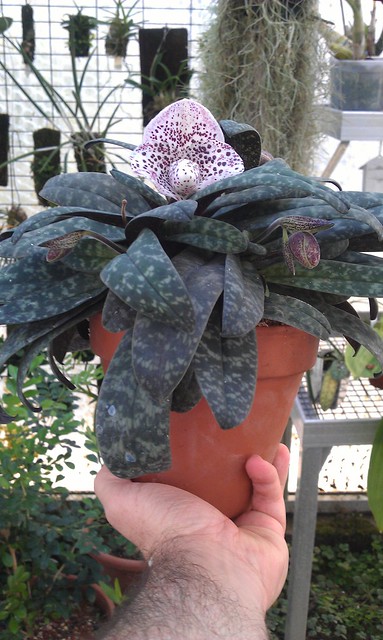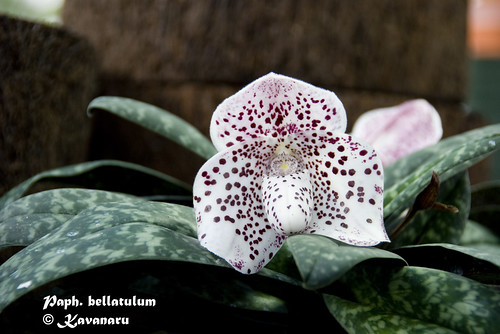This was one of my first paphs and it was a boom or bust plant for about 6 years.
For a few years it would have anual fits of great growth followed by root loss. Then after a few years it seemed to be indistructable and got up to about 10 growths. After a couple years like that it started loosing growths to rot one at a time, refusing to put on new roots and blooming all the while.
No matter how often or in whatever mix it kept going down until loosing the whole thing.
I managed to get a compot of selfings of this plant, and they would do great in the compot, but after getting potted individually they would "lock up" and gradually die out.
This is all before I came up with the low-K theory. I picked up a new NBS seedling bellatulum from Sam, and after almost a year (in a basket) its growing fantasticly and may bloom this spring. My niveum has never been better too, and a small compot of godefroyae seedlings are growing very fast.
Everything would probably be considered Intermediate to warm temps in my GH, but I have the bellatulum at the lower light end compared to niveum and godefroyae at the bright end.
The belatulum is down by my sanderianum, supardii, and emersonii , while the niveum and godefroyae are under vandas and next to "cactus-paph" species like exul and druryii.






